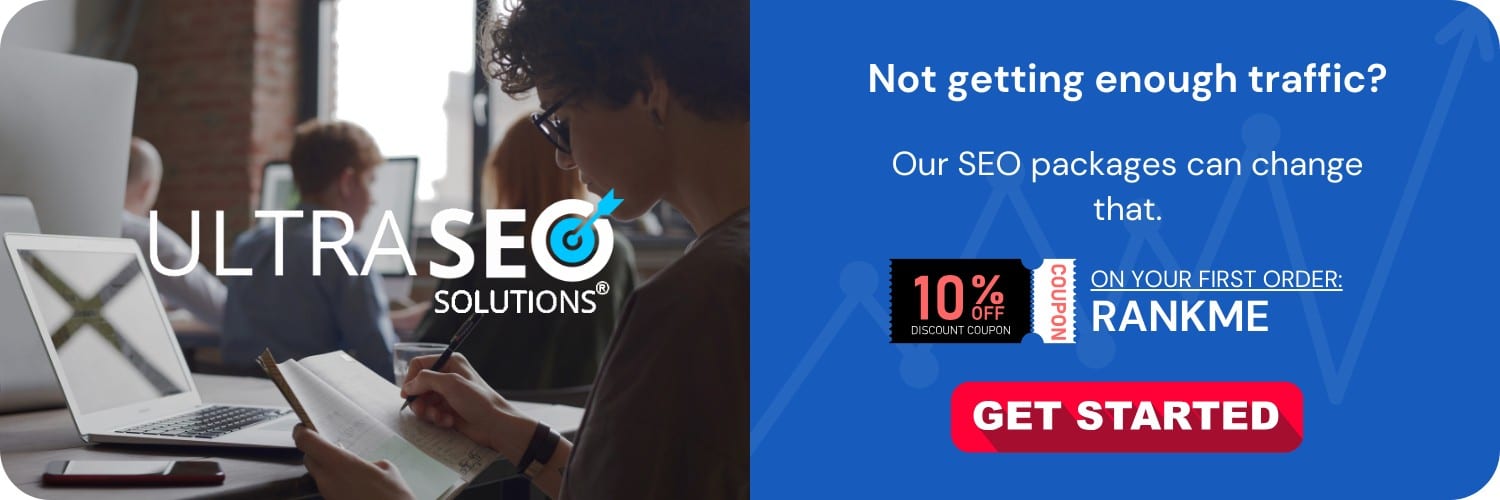
SEO strategies for an online furniture store must encompass a comprehensive approach that includes keyword optimization, on-page SEO techniques, content creation, link-building efforts, local SEO practices, technical website optimization, and mobile optimization. By targeting relevant search queries, optimizing each product page, crafting informative content, building a network of backlinks, ensuring a localized presence, perfecting the technical aspects of the website, and enhancing mobile user experience, furniture store owners can increase their online visibility, attract targeted traffic, and boost their sales.
Understanding SEO for an Online Furniture Store
SEO, or Search Engine Optimization, is the art and science of positioning your website in search results to gain more organic traffic. For an online furniture store, this means optimizing your digital presence to appear when customers are searching for furniture-related queries. The ultimate aim is to rank as highly as possible on search engines like Google, Bing, or Yahoo.
Keyword Research and Optimization
Identifying Furniture-Specific Keywords
The foundation of SEO is keyword research. For furniture stores, this involves finding the terms and phrases potential customers use when looking for products you offer. This could range from broad terms like “modern office desks” to more specific phrases like “mid-century modern velvet sofa.” Use keyword research tools to identify high-volume, relevant keywords to target throughout your website.
Optimizing Product Listings and Descriptions
Once keywords are identified, integrate them into your product listings and descriptions naturally and appropriately. Each product should have a unique, keyword-optimized title and description to maximize its search visibility. Remember, avoid keyword stuffing as it can harm your rankings and provide a poor user experience.
On-Page SEO Techniques
Page Titles and Meta Descriptions
Page titles and meta descriptions provide brief summaries of web pages in search results. Craft these with a mix of your primary keywords and calls to action to entice users to click through to your site.
Header Tags and Content Structure
Using header tags (h2, h3, etc.) helps structure content, making it easier for search engines to understand the hierarchy and relevance of your information. Headings should be used to break up content into digestible sections and include target keywords where appropriate.
Image Optimization
Images play a crucial role in showcasing your furniture. Optimize all images by compressing file sizes to improve page load speeds, using descriptive file names, and incorporating alt text with relevant keywords to ensure they are indexable by search engines.
Quality Content Creation
Blog and Article Development
Creating blog posts and articles that provide valuable information related to furniture can showcase your expertise and attract visitors to your site. Cover topics like furniture care, design trends, or buying guides, and remember to optimize these pieces for your target keywords.
Engaging Product Descriptions
Avoid generic descriptions for your products. Instead, write unique and engaging copy that gives customers a clear idea of what to expect, and emphasize the unique features and benefits of your furniture.
Link-Building Efforts
Acquiring Backlinks
Obtaining high-quality backlinks from reputable websites is essential for increasing your domain authority and search rankings. Reach out to interior design bloggers, furniture magazines, and home improvement sites to secure valuable backlinks.
Internal Linking Strategies
Internal linking connects various pages within your website, helping search engines discover new pages and distribute page authority throughout your site. Link to related products or content where it is natural and helpful for the user.
Local SEO for Furniture Stores
Google My Business Optimization
If you have a physical storefront, Google My Business is invaluable. Verify your listing, provide accurate and up-to-date information, and incorporate keywords in your business description.
Local Citations
List your furniture store on local directories and ensure that your name, address, and phone number (NAP) are consistent across these listings to improve local search visibility.
Technical SEO Considerations
Website Speed and Performance
Site speed is a ranking factor, so optimize your website to load quickly. Compress images, leverage browser caching, and minify CSS and JavaScript files to improve performance.
Mobile-Friendly Design
With more users shopping on mobile devices, ensuring your site is mobile-responsive is crucial for both user experience and search engine rankings.
Site Architecture and Navigation
A well-structured website allows users and search engines to navigate your site easily. Create a logical hierarchy and use clear, descriptive labels for categories and subcategories of products.
Secure Sockets Layer (SSL) Encryption
An SSL certificate is essential for securing your website and building trust with your visitors. It encrypts data transferred between the user’s browser and your server, which is a positive ranking signal.
Monitoring and Analytics
SEO Tools and Metrics Tracking
Utilize tools like Google Analytics, Google Search Console, and SEMrush to track your SEO progress. Monitor key metrics like organic traffic, conversion rates, and keyword rankings to refine your strategies.
A/B Testing
Conduct A/B testing on various website elements, such as product descriptions, CTA buttons, and images, to see what resonates best with your audience and leads to higher engagement and conversions.
Finishing Thoughts
SEO for an online furniture store is multi-faceted and demands patience and consistency. Implementing these strategies is a foundational step toward building your online presence and driving more targeted traffic to your site. As you continue to optimize and refine your approach, you’ll deepen your understanding of your customers’ needs and how to serve them better through your digital marketing efforts. Remember, SEO is not a one-time task but an ongoing process that requires attention to detail and adaptation to the ever-evolving search landscape. Stay informed, remain agile, and focus on providing the best possible experience for your users, and you’ll be well on your way to SEO success.
Frequently Asked Questions
What is SEO and why is it important for an online furniture store?
SEO, or Search Engine Optimization, is the process of optimizing a website to improve its visibility when people search for products or services related to the business in search engines like Google. For an online furniture store, SEO is crucial because it helps drive organic traffic to the website, making it easier for potential customers to find the store when they are searching for furniture online. A strong SEO strategy can lead to increased brand awareness, higher sales, and a competitive edge in the market.
How can keyword research benefit an online furniture store?
Keyword research is the foundation of SEO. For an online furniture store, researching and identifying the right keywords can attract the store’s target audience. These keywords should be relevant to the types of furniture sold, style, location (if targeting a specific area), and customer queries. By understanding what potential customers are searching for, a furniture store can create content and optimize product descriptions to align with these terms, thereby improving their chances of ranking higher on search engine results pages (SERPs).
What are the best practices for on-page SEO in an online furniture store?
On-page SEO for an online furniture store involves optimizing individual web pages to rank higher and earn more relevant traffic. Best practices include:
- Title Tags: Create unique and descriptive title tags that incorporate target keywords for each product and page.
- Meta Descriptions: Write compelling meta descriptions that accurately describe the content of the page and include keywords.
- Header Tags: Use header tags (H1, H2, H3) to structure content, with H1 tags reserved for the main title or purpose of the page.
- Product Descriptions: Write unique and keyword-rich product descriptions that provide value and information to customers.
- URL Structure: Utilize SEO-friendly URLs that are readable and include keywords relevant to the page content.
- Image Optimization: Compress images to reduce load times and include descriptive ALT tags with keywords.
- Internal Linking: Integrate internal links to guide users to relevant content and products within the site, enhancing user experience and distributing page authority.
Why are backlinks important for an online furniture store’s SEO?
Backlinks, or inbound links from other websites, are vital for an online furniture store’s SEO as they act as a vote of confidence from one site to another. Search engines consider backlinks as an indicator of quality and relevance of content, which can significantly influence rankings. An online furniture store should aim to build a strong backlink profile from reputable, industry-related websites to improve its authority and search engine visibility.
How can social media integration support my furniture store’s SEO efforts?
Social media integration can support your furniture store’s SEO efforts by increasing brand exposure, driving traffic to the website, and enhancing content reach. While social media signals do not directly influence search rankings, social platforms can help to disseminate content, promote products, engage with customers, and potentially lead to natural backlinking from users who share the store’s content. This indirectly boosts the store’s SEO by generating more inbound traffic and increasing the visibility of the store’s content.
What role does content marketing play in SEO for an online furniture store?
Content marketing plays a significant role in SEO for an online furniture store as it provides valuable and relevant content to the target audience. By creating a variety of content such as blog posts, buying guides, design tips, and how-to articles related to furniture, the store can attract and engage potential customers. High-quality, original content optimized with targeted keywords helps in ranking higher in search engines, drawing more visitors, and positioning the store as an authority in the furniture niche.
How can user experience (UX) impact SEO for an online furniture store?
User experience (UX) is critical to SEO because search engines prioritize websites that provide a positive user experience. For an online furniture store, ensuring a fast, responsive web design, intuitive navigation, clear call-to-action buttons, and customer support features such as live chat can encourage longer visit durations, reduce bounce rates, and lead to higher conversions. These user engagement metrics send positive signals to search engines, which can improve the store’s rankings.
Can local SEO tactics benefit an online furniture store?
Even though an online furniture store operates virtually, local SEO tactics can still be beneficial, especially if the store has a physical location or serves a specific geographical area. Local SEO strategies include optimizing for local keywords, claiming and optimizing the store’s Google My Business listing, getting listed in local directories, and earning local backlinks. These tactics help the furniture store appear in local search results, making it more accessible to nearby customers who may be looking for furniture stores in their area.
Should an online furniture store use paid search advertising in addition to SEO?
While SEO focuses on organic search results, paid search advertising can be a potent addition to an online furniture store’s marketing strategy, providing immediate visibility on search engine results pages. Implementing pay-per-click (PPC) campaigns for targeted furniture-related queries can complement long-term SEO efforts, especially for competitive keywords where it may be challenging to rank organically. Paid search advertising can also be used for testing the effectiveness of different keywords and gaining valuable insights into customer behavior.






